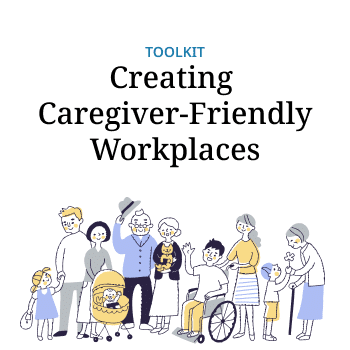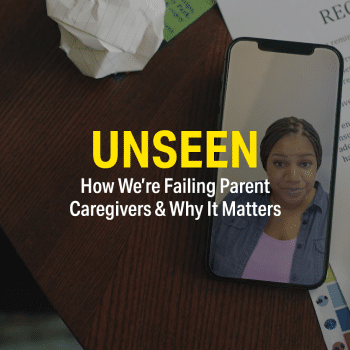
Explore the Caregiver-Friendly Workplaces Toolkit
Learn how companies with effective caregiver-friendly programs and policies can be better places to work and more profitable, too.
Creating Caregiver-Friendly Workplaces Toolkit
Presented by

Everyone who works also has interests and responsibilities outside of their jobs. For quite some time, human resource benefits have been evolving toward making it possible for people to have both a fulfilling career and a satisfying personal life.
Adding accommodations for caregivers is not new as much as it is an expanded view of what it means to care for family. Here are three places to infuse more flexibility into your policies, which will be seen as an improvement for all workers, not just caregivers.

Permission to work outside of a company’s normal business hours can be immensely helpful to workers who balance caregiving and their paid job.
While there are 168 hours in a week, the majority of American businesses have rigidly clung to just the hours between 8:00 a.m. and 5:00 p.m. Monday through Friday. This rigidity may be forcing your employees to sneak around, just to be able to take care of their families.
By imagining how much of your company’s work could get done at any other time, you can create a wealth of possibilities for employee caregivers. For example:

Where companies have landed on the work-from-home spectrum in a post-Covid world varies across industries, but one thing is clear: Almost every company learned how to do it. Companies can make this possible by:

Maybe your company offers paid vacation, some sick leave and a couple of personal days. What if you didn’t keep tabs on what kind of leave workers take but instead included it all in one pool of “paid personal time” to do with as they choose?
A system that pushes employees to take sick leave when they aren’t actually sick doesn’t feel right to them and perpetuates stereotypes of caregiving workers “gaming” the system.
Flexible time off policies can add flexibility without increasing the amount of paid leave your company provides. These may include:

Many part-time workers are just as loyal and valuable as their full-time counterparts, and despite vague federal and state regulations, many companies and organizations already provide benefits to part-timers. This arrangement can be the perfect solution to employee caregivers who love their jobs but cannot commit to a 40-hour work week.
Here are three ways you can get started:

Learn how companies with effective caregiver-friendly programs and policies can be better places to work and more profitable, too.

The “Unseen” documentary gives an unfiltered, honest glimpse into the lives of caregivers and their families.

Whether caring for a loved one due to age, disability, or a medical condition, our intuitive online platform provides personalized advice and expert assistance, however and whenever it’s needed. We help caregivers discover a better way forward that prioritizes their loved one’s care and their own wellbeing, so they can thrive at home and at work

Sign up to get notified about upcoming screenings, new bonus content releases, and get a 10% off coupon for our mech store!